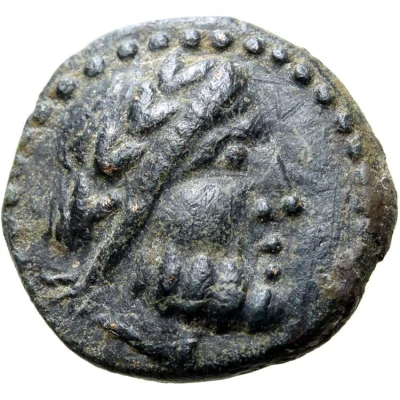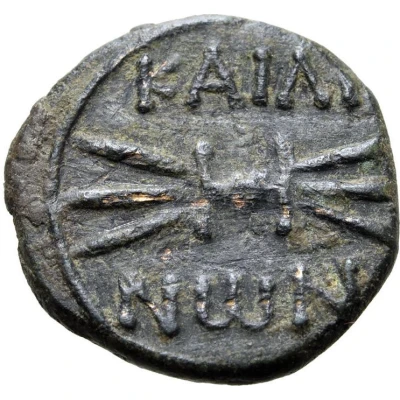


© Roma Numismatics Limited
Uncia 206 BC - 195 BC
| Bronze | 2.82 g | 15 mm |
| Issuer | Caelia (Apulia) |
|---|---|
| Type | Standard circulation coin |
| Years | 206 BC - 195 BC |
| Currency | Drachm |
| Composition | Bronze |
| Weight | 2.82 g |
| Diameter | 15 mm |
| Shape | Round (irregular) |
| Technique | Hammered |
| Orientation | Variable alignment ↺ |
| Demonetized | Yes |
| Updated | 2024-10-09 |
| Numista | N#428139 |
|---|---|
| Rarity index | 100% |
Reverse
Thunderbolt; KAIΛΙ-ΝꞶΝ above and below.
Script: Greek
Lettering:
KAIΛΙ
ΝꞶΝ
Interesting fact
The Uncia coin was used as a form of currency in ancient Rome and its territories, and it was equivalent to 1/12 of a Roman pound. The coin was first introduced during the reign of King Tarquinius Priscus in the 7th century BC and was used until the 2nd century AD. The Uncia coin was made of bronze and had a distinctive design, featuring the image of a bull on one side and the Roman numeral "X" on the other. The coin was used for everyday transactions and was also used to pay taxes and debts. Despite its small value, the Uncia coin played an important role in the Roman economy and was widely used throughout the empire.
Price
| Date | Mintage | VG | F | VF | XF | AU | UNC |
|---|---|---|---|---|---|---|---|
| ND (206 BC - 195 BC) | - | - | - | - | - | - |
Values in the table are based on evaluations by sales realized on Internet platforms. They serve as an indication only for Uncia (206 BC - 195 BC) coin.